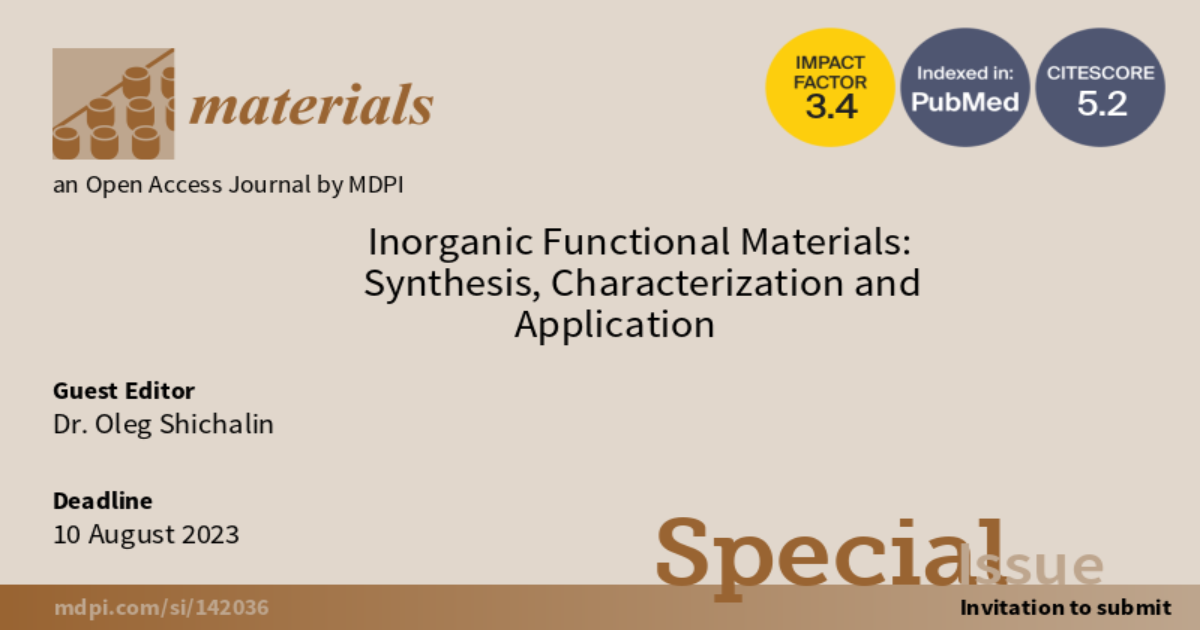Inorganic Functional Materials: Synthesis, Characterization and Application
A special issue of Materials (ISSN 1996-1944). This special issue belongs to the section "Materials Chemistry".
Deadline for manuscript submissions: closed (10 August 2023) | Viewed by 21453

Special Issue Editor
Interests: SPS technology; ceramic welding; ultra high temperature ceramics; biological porous materials; nuclear waste storage ceramics
Special Issues, Collections and Topics in MDPI journals
Special Issue Information
Dear Colleagues,
As a result of the dynamic development of the nuclear industry, including nuclear power, as well as the progressive growth of personalized medicine services, there is an obvious and urgent need for high-quality functional materials that are clearly oriented to their practical purpose. Regardless of their functionality, it is the quality of materials that determines the effectiveness, safety, and necessity of various technologies, products, and services that provide full human life support for sustainable global development. The creation of new functional materials for a special purpose and the development and production of effective technologies is based on fundamental scientific knowledge about the chemical nature of raw components and end products, about physical and chemical bases of their synthesis, and about technological principles of their transformation into required products. Without the aforementioned scientific knowledge, it is impossible to predict and, even more so, to regulate the creation of functional materials with the required and specified set of performance characteristics. In this case, there is no possibility to select a suitable production technology, upgrade it into a more efficient design, or search for a new promising technological solution that can ensure the production of the required products for a specific purpose.
Dr. Oleg Shichalin
Guest Editor
Manuscript Submission Information
Manuscripts should be submitted online at www.mdpi.com by registering and logging in to this website. Once you are registered, click here to go to the submission form. Manuscripts can be submitted until the deadline. All submissions that pass pre-check are peer-reviewed. Accepted papers will be published continuously in the journal (as soon as accepted) and will be listed together on the special issue website. Research articles, review articles as well as short communications are invited. For planned papers, a title and short abstract (about 100 words) can be sent to the Editorial Office for announcement on this website.
Submitted manuscripts should not have been published previously, nor be under consideration for publication elsewhere (except conference proceedings papers). All manuscripts are thoroughly refereed through a single-blind peer-review process. A guide for authors and other relevant information for submission of manuscripts is available on the Instructions for Authors page. Materials is an international peer-reviewed open access semimonthly journal published by MDPI.
Please visit the Instructions for Authors page before submitting a manuscript. The Article Processing Charge (APC) for publication in this open access journal is 2600 CHF (Swiss Francs). Submitted papers should be well formatted and use good English. Authors may use MDPI's English editing service prior to publication or during author revisions.
Keywords
- inorganic synthesis
- new materials
- solid-phase synthesis
- material applications
- study of physical and chemical properties






